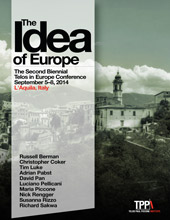“What appears to be a new Iran”: the ABC News host takes us inside Iran with these words, while the ABC News reporter in Iran is ready to match him with the following: “We needed a permit, but once we got it, the city opens up to all kinds of surprises.”[1] Meanwhile, the reporter spills the end of her report reassuring us that changes are on their way but not overnight, and a new Iran is embracing pop music, iPhones, Steven Jobs, and most importantly, nose jobs so that Iranians can look more Western. This overtly Orientalist narrative presents Iran as a new and young country, in contrast to an ancient, old, mystic, and mysterious Iran that has captured and mesmerized the Western unconscious for centuries. The reporter finishes her report by conditioning these changes on the nuclear deal that will facilitate all these sweeping shifts and alterations.
Not everybody shares this Orientalist narrative, but the promising economic market in the near future of Iran is what focuses many analysts’ ample attention. Richard Javad Heidarian, a specialist in geopolitical and political affairs, unveils another aspect of this ubiquitous hope: “And similar to the case of China, an Iran–West rapprochement holds the promise of unlocking one of the world’s most promising markets, with broad implications for the global economy.” Regardless of all these cost-benefit driven analyses, the deal generated two opposing queues of political observations, rotating around a simple “yes” or” no” response to the deal. John Bell, the director of the Middle East program at the Toledo International Peace Centre in Madrid, provides us with a snapshot of all the debates over the deal: “The debate over the Iran nuclear agreement has been vibrant and will continue all the way up to the American Congressional vote. Progressives have lined up with the deal, as has most of the world. However, there are many voices in the U.S., Israel, and the region lined up against it.”
 I opened this conference by referring to the medical metaphor within which we have framed the question of democracy in order to point toward two paths for understanding this metaphor and to plead for the practice of both medicine and politics, not as mechanical sciences but as healing arts. In the following paper I would like to provide an example of the kind of artistic practice I have in mind by looking at two case histories of revolutionary movements from below, one success and one failure. What I would like to show in both cases is that the path to success lies in understanding the problem of democracy, first, as a problem of metaphor and thus of representation in the aesthetic sense and, second, as a problem that involves intervention in a developing metaphorical dynamic.
I opened this conference by referring to the medical metaphor within which we have framed the question of democracy in order to point toward two paths for understanding this metaphor and to plead for the practice of both medicine and politics, not as mechanical sciences but as healing arts. In the following paper I would like to provide an example of the kind of artistic practice I have in mind by looking at two case histories of revolutionary movements from below, one success and one failure. What I would like to show in both cases is that the path to success lies in understanding the problem of democracy, first, as a problem of metaphor and thus of representation in the aesthetic sense and, second, as a problem that involves intervention in a developing metaphorical dynamic. 

